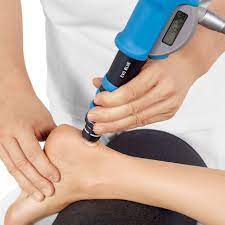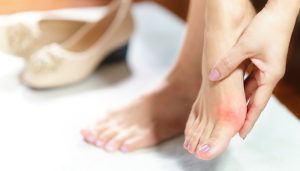
Shockwave therapy is a non-invasive treatment for foot pain that uses high-energy sound waves to promote healing and relieve pain. The sound waves are directed to the affected area using a specialised device, stimulating blood flow and increasing the body’s natural healing response.
Shockwave therapy can be used to treat a variety of foot conditions, including plantar fasciitis, Achilles tendonitis, and heel spurs. It is often used as a last resort after more conservative treatments, such as rest, ice, and physical therapy, have been unsuccessful.
The procedure is usually performed in a healthcare professional’s office and typically lasts between 15 and 30 minutes. Patients may experience mild discomfort during the procedure, but it is generally well-tolerated.
After the treatment, patients may experience some temporary soreness, swelling, and bruising in the treated area. Most people are able to resume normal activities within a few days of the procedure.
The effectiveness of shockwave therapy for foot pain varies depending on the condition being treated and the individual patient. Some patients experience significant improvement in their symptoms after one treatment, while others require multiple treatments to achieve the desired results.
It is important to discuss the risks and benefits of shockwave therapy with your healthcare professional before undergoing the procedure. Not everyone is a good candidate for this treatment, and it may not be covered by insurance in all cases.




